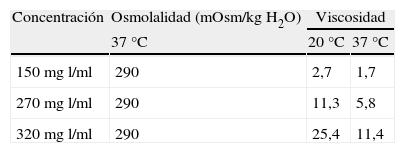En la unidad de cuidados intensivos (UCI) existen muchos factores que pueden propiciar la aparición de sucesos adversos, estando relcionados con la administracion de farmacos es un alto porcentaje, estando relcionados con la administracion de farmacos es un alto porcentaje relacionados con la administración de fármacos. La tomografía axial computarizada es una prueba diagnóstica habitual en el paciente crítico. Para mejorar la visualización de tejidos blandos se utiliza contraste. El contraste es una medicación y la enfermera es la responsable de su correcta administración. El manejo del paciente crítico es complejo. El equipo de UCI y radiología, comparten la responsabilidad de la asistencia y seguridad del paciente durante el traslado y realización de las pruebas con contraste. La Organización Mundial de la Salud recomienda, en sus estrategias para la seguridad del paciente, analizar los errores y aprender de los mismos. Por ello, decidimos investigar las causas del suceso adverso, ocurrido con categoría de gravedad E a un paciente que ingresó en la UCI por un shock séptico de origen abdominal. Se realizó tomografía axial computarizada abdominal con contraste el cual se inyectó por un catéter venoso central. El contraste no apareció en la imagen. ¿Qué ocurrió? El análisis causal permitió entender los factores desencadenantes del evento. Se elaboró un plan de cuidados y un algoritmo para que no volviera a suceder, cuyos objetivos fueron: la mejora de conocimientos, habilidades y la promoción de actitudes favorables hacia la seguridad del paciente, actuando en todos los niveles de prevención primaria, secundaria y terciaria.
In a intensive care unit (ICU) there are many factors that can lead to the occurrence of adverse events. A high percentage of these events are associated with the administration of drugs. Diagnostic tests, such as computed tomography, is common in critically ill patients and technique can be performed with injection of contrast agent to enhance the visualization of soft tissue. The contrast is a medication and the nurse is responsible for its proper administration. The management of the critically ill patient is complex. ICU team and radiology shares responsibility for the care and safety of the patient safety during the transfer and performing tests with contrast. The World Health Organisation patient safety strategies, recommends analysing errors and learning from them. Therefore, it was decided to investigate the causes of the category E severity adverse events that occurred in a patient who was admitted to the ICU for septic shock of abdominal origin. An abdominal computed tomography was performed with contrast which was injected through a central venous catheter. The contrast did not appear in the image. What happened? Causal analysis helped to understand what triggered the event. A care plan and an algorithm were drafted to prevent it from happening again, with the following objectives: improving knowledge, skills and promoting positive attitudes towards patient safety, working at primary, secondary and tertiary care levels.
Artículo
Comprando el artículo el PDF del mismo podrá ser descargado
Precio 19,34 €
Comprar ahora










